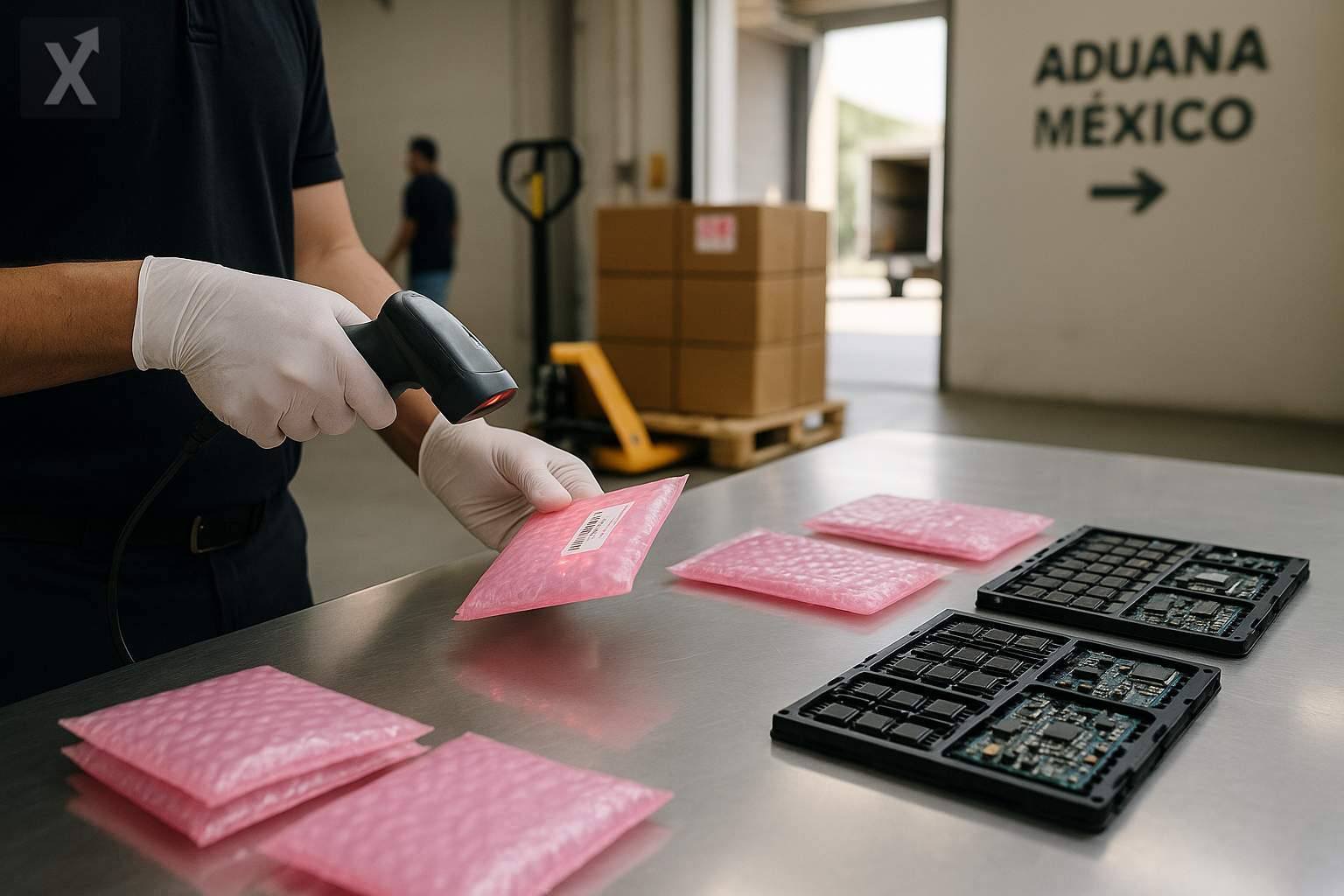Semiconductor Industry Calls to Safeguard USMCA; Mexico Sees Opportunity to Strengthen Testing and Assembly

The Semiconductor Industry Association (SIA) has urged the preservation and strengthening of the USMCA during the 2026 review, warning that poorly calibrated adjustments could jeopardize the productive integration that currently allows North America to compete with Asia in semiconductor manufacturing. The statement emphasizes that regulatory certainty is crucial for projects with multiyear investment horizons and equipment worth hundreds of millions of dollars. In this context, Mexico is playing an increasingly visible role in the testing, assembly, and packaging links of the chain, as well as in electronics manufacturing that incorporates chips—a strategic area for its nearshoring agenda.
According to the SIA, the regional ecosystem operates like an integrated circuit: design can begin in Canada, prototyping and testing in Mexico, and advanced manufacturing in the United States, ultimately ending up in final goods such as cars, aircraft, or servers. That synchronization depends on clear rules regarding trade, intellectual property, and data flows. The industry is calling for the maintenance of rules of origin that take into account the unique characteristics of each type of chip and for an update to the digital chapter of the USMCA to protect the free flow of data, incorporate cybersecurity standards, and include guidelines on artificial intelligence—elements that currently support engineering teams spread across multiple time zones.
For Mexico, this discussion arrives at a time of momentum due to supply chain relocation. Clusters in regions such as Jalisco (design and testing), Baja California and Chihuahua (assembly and electronics), as well as Nuevo León and Sonora (industrial supply and energy), have attracted new plants and expansions. The country has implemented tax incentives for productive investments and technical training programs, while at the bilateral level, initiatives have been rolled out to map the supply chain and develop talent under the High-Level Economic Dialogue. Mexico’s proximity to the US market, its engineering talent pool, and competitive costs are advantages, although challenges remain in electrical infrastructure, water availability, and regulatory certainty—especially critical for energy-intensive operations with high quality demands.
The commercial balance reflects this interdependence: the United States records trade surpluses in semiconductors with both Mexico and Canada, while the region as a whole faces competitive pressures from Asia. Looking toward 2026, the industry seeks specific rules of origin that will make it easier to integrate chips made or tested within the region into a broader range of final products assembled in North America. At the same time, the industry warns of the risk of triangulation of sensitive components by third countries and thus suggests strengthening investment review mechanisms, economic security coordination, and customs controls to protect the supply chain without hindering the legitimate flow of trade and innovation.
The digital dimension is another key pillar. The free, cross-border transfer of data has enabled teams in Mexico to collaborate in real-time with design centers in the United States and Canada. Any restriction, tax, or data localization requirement would increase costs and timelines in a sector where a single project may involve thousands of data iterations. The SIA proposes expanding intellectual property safeguards and maintaining effective penalties against trade secret theft or forced disclosure of code—conditions that underpin technological advantage and reduce the risk of losing added value.
The broader backdrop is one of shifting geopolitics, tighter controls on technology exports, and a reconfiguration of global tariffs, all contributing to greater operational complexity. For Mexico, capitalizing on semiconductor nearshoring will require expediting permits, strengthening rule of law, and ensuring adequate, competitive energy—including a transition to clean sources demanded by major manufacturers—along with deeper technical training in advanced testing processes, metrology, and quality control. Certainty regarding the USMCA is a foundation for long-term decisions, but domestic execution will determine how much value-added is actually captured locally.
In summary, the chip industry is advocating for preservation of the USMCA’s framework and updates to its most sensitive chapters—rules of origin and digital—to shore up regional competitiveness. Mexico has room to scale its role in testing and assembly if it supports this with infrastructure, talent, and legal certainty. The 2026 review stands out as a crucial window: the outcome will determine the depth of North America’s semiconductor manufacturing integration and the region’s capacity to withstand external shocks without losing momentum.





